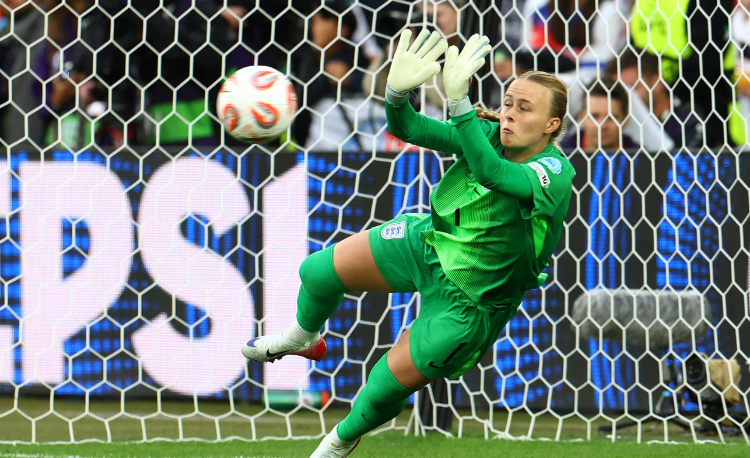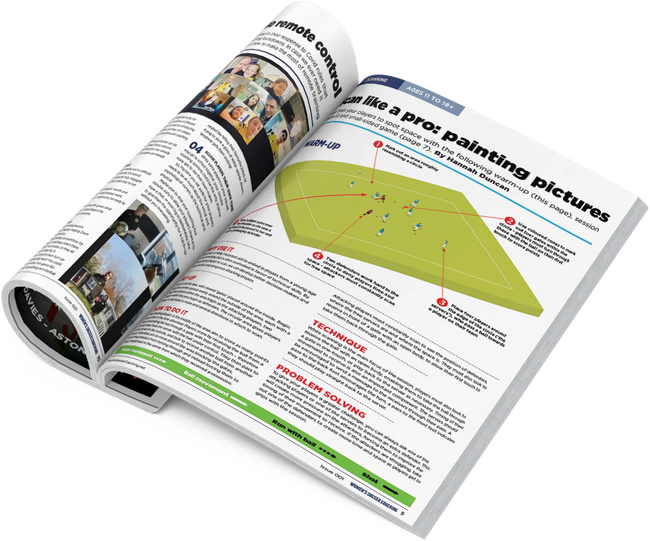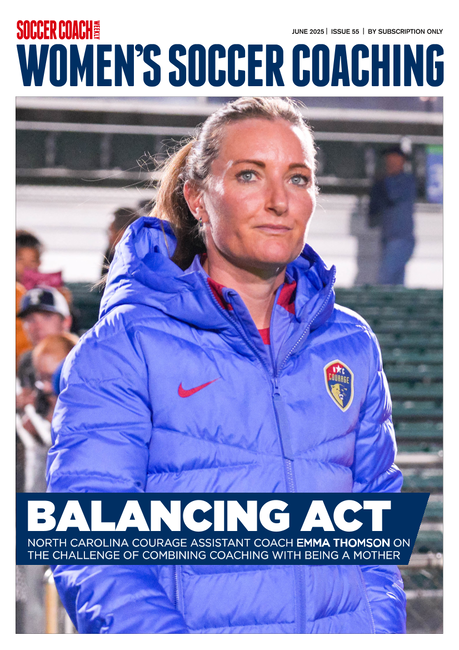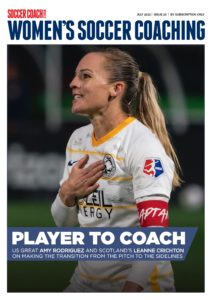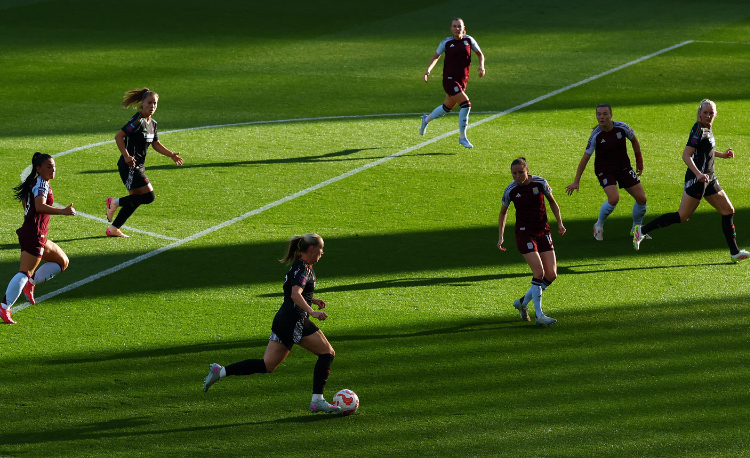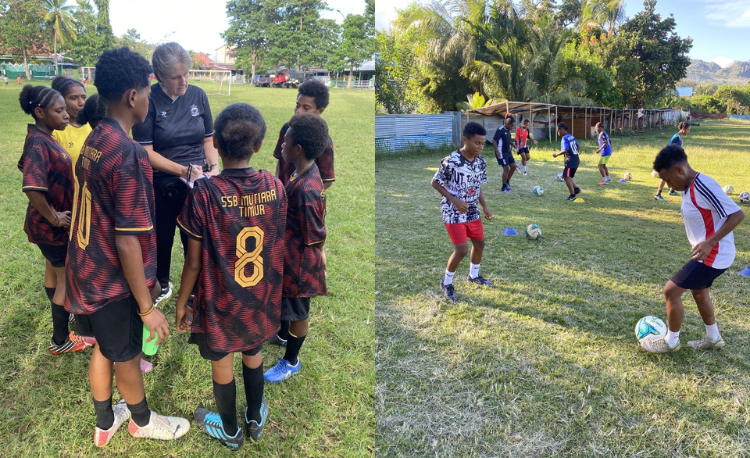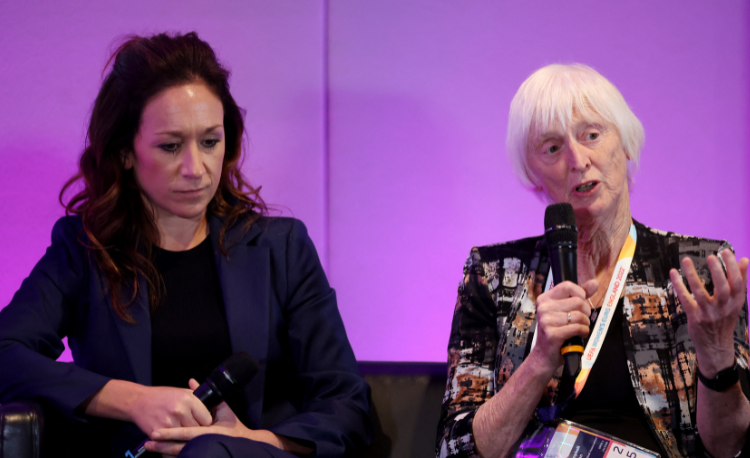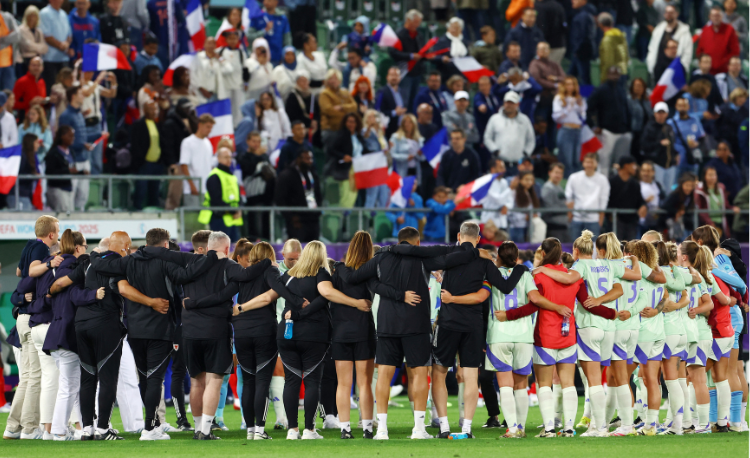You are viewing
1 of your 3 free articles
Creating a framework for your goalkeeper's development
Having spent last season developing a clear framework for supporting the goalkeepers at his new club, Gareth Crewe details what how he did it
Goalkeepers are becoming an increasingly important part of the women’s game.
At the elite end, performance levels continue to go to new heights, and the growing abilities of goalkeepers who can play accurate passes over 50, 60, or even 70 metres, is opening up new tactical options for teams – for example, Hannah Hampton’s driven pass to Alessia Russo at Euro 2025 taking the entire Dutch team out of the game.
But how do we develop our goalkeepers to ensure they are an effective member of the team? I’ll describe the process I went through in embedding goalkeeping behaviours and attributes with my club throughout the last season.
Having moved to a new country the previous season, one of the objectives I set going into 2024/25 season was to develop a clear framework of how I wanted to support the goalkeepers within my club, and what attributes were required to be successful. The purpose of this framework was to reduce ambiguity in expectations (from both players and coaches), provide structure and consistency in how we train and develop goalkeepers across the club, and empower the goalkeepers to review their own performances.
Based on a similar project I’d supported in a previous role, I had some ideas on what this could look like, as well as documents including the attributes we wanted to develop. However, having moved from youth development roles to a role in senior football in a different continent, what worked well in previous environments wouldn’t necessarily transfer perfectly.
The process started by reflecting on what I thought the key behaviours would be, aiming to select four to six that encapsulated how the goalkeepers could best support the team within the game, specific to our level and the opponents we’d face. The drafted list was shared with other coaching staff, as well as our senior goalkeepers, and we settled on a final list of six – brave, resilient, athletic, proactive, competitive, and dominant. I had initially hoped we’d end up with an easy-to-remember acronym, but PC BRAD was the best I got!
We also created 24 descriptions of what we want from the goalkeepers that are specific to the three main phases of goalkeeping that we coach – in possession, defending the goal, and defending the space. For example, we expect our goalkeepers to “recognise and predict the opponent’s press and how to bypass it” in possession, or “be brave to try to affect crosses and passes behind the defence” when defending the space.
Within these descriptions, it’s important to remember that every goalkeeper is different, and therefore how we coach them will be different. Our goalkeepers all have very different physical profiles, and that has tactical implications. One of our goalkeepers has a higher position when defending the space as she can recover to her goal quickly if she decides not to engage the ball, but that does not mean that we demand the same from all goalkeepers, as it wouldn’t suit their skills. Even though we might coach the goalkeepers’ tactical actions based on their individual differences, the six key behaviours we try to reinforce remain consistent.
What you coach isn’t always as important as how you coach it. We try to embed our philosophy within our practice by consistently repeating language, questioning for understanding, and being as intentional as possible in how we train. On session planning documents, I’ll be specific about which behaviour(s) and which abilities we are training towards, e.g. a matchday -2 session might focus heavily on being competitive. This means that by the time we get to matchday, the goalkeepers should have a good idea on how we expect them to play.
Feedback from the goalkeepers, and other coaching staff, has been positive, but this hasn’t been without its challenges. There is a thin line between “brave” and “reckless”, or between “proactive” and “impulsive”, but this is all part of the learning process, both for the goalkeepers, but also for us in how we coach them, and we have to help them recognise the right time for the right actions.
Decision-making is such an important skill for the position – hence why we often see goalkeepers getting better even into their 30s – and they need to have the ability to make decisions within training sessions that will allow them to learn and refine their craft. We expect them to make mistakes, especially when we’re asking them to be brave and proactive, but we also expect them to show competitive and resilient responses to these mistakes. Of course, all of this takes time and it’s important to be patient and supportive throughout these processes.
For all coaches out there, whether you work specifically with goalkeepers or you’re more focused on outfield players and/or the team, I’d encourage you to reflect on how you support your goalkeepers. It doesn’t have to be as detailed as this, but even just reinforcing key behaviours you want to see from them can make a huge difference. With so many great young female goalkeepers coming through, it’s exciting to see where the next Earps, Hampton, or Keating may come from.
Newsletter Sign Up
Newsletter Sign Up
Discover the simple way to become a more effective, more successful soccer coach
In a recent survey 89% of subscribers said Women's Soccer Coaching makes them more confident, 91% said Women's Soccer Coaching makes them a more effective coach and 93% said Women's Soccer Coaching makes them more inspired.
*includes 3 coaching manuals
Get Inspired
All the latest techniques and approaches
Women's Soccer Coaching offers proven and easy to use soccer drills, coaching sessions, practice plans, small-sided games, warm-ups, training tips and advice.
We've been at the cutting edge of soccer coaching since we launched Soccer Coach Weekly in 2007, creating resources for the grassroots youth coach, following best practice from around the world and insights from the professional game.
